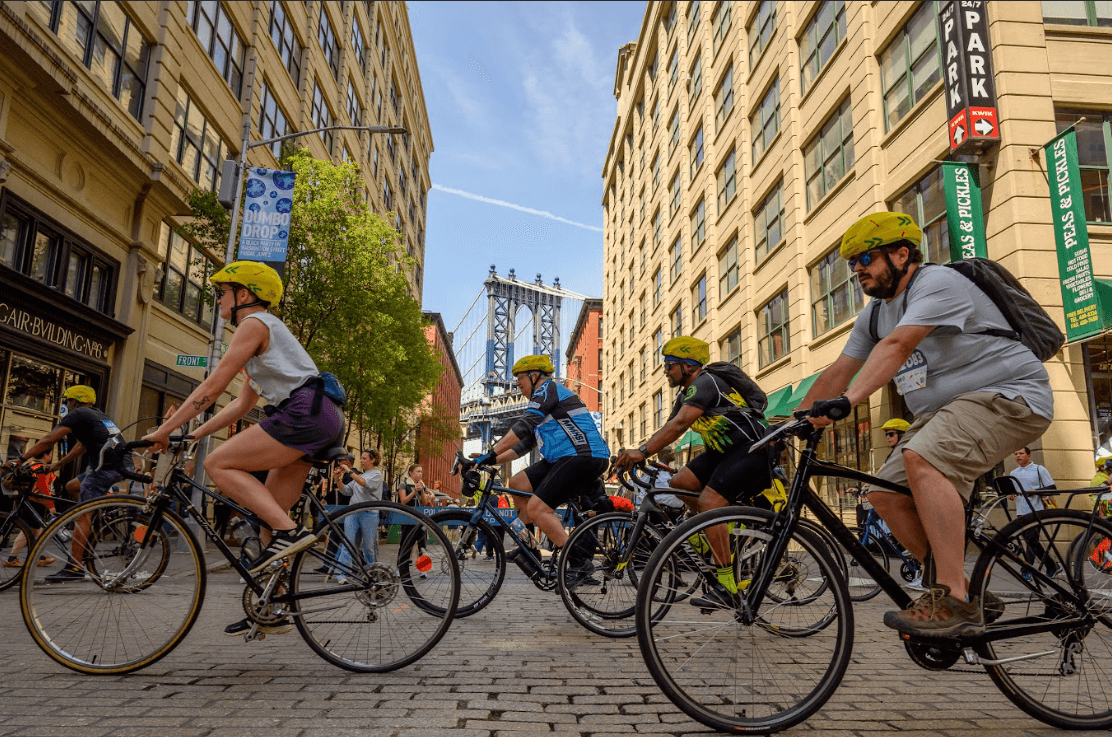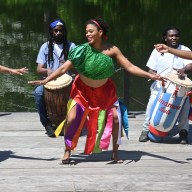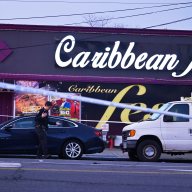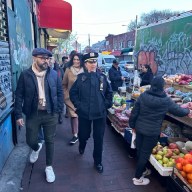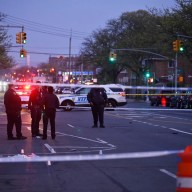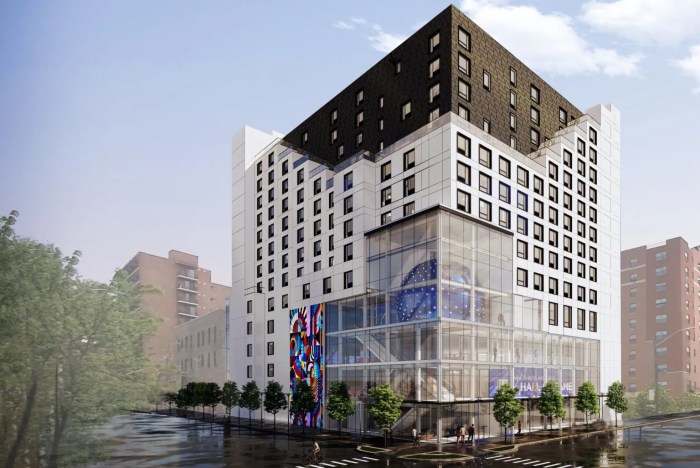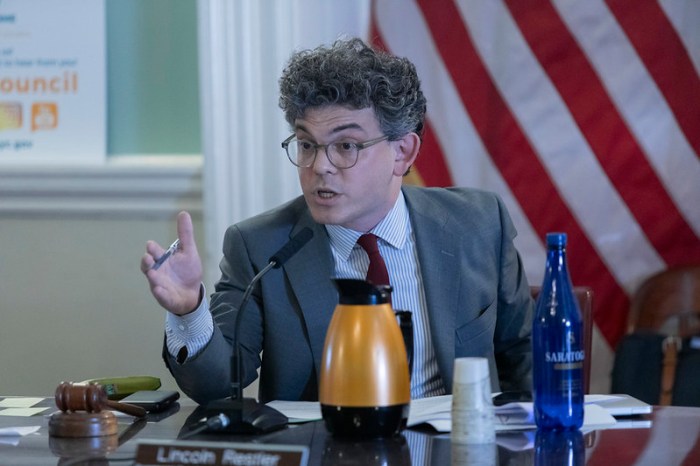Part of a monthly series focusing on each of Queens’ unique neighborhoods
Where:
Located on the northwest tip of Queens, Astoria juts into the East River to the north and west and is bordered by Long Island City to the south and Sunnyside to the east. The Triborough Bridge, which broke ground in 1929, connects Astoria with the Bronx, Manhattan, and Randall’s Island. The Grand Central Parkway (GCP) connects the neighborhood with the rest of the borough.
Housing:
A growing number of young professionals are staying a few subway stops longer on the train to call Astoria home as rents in Manhattan have skyrocketed. Brooklyn expatriates have also migrated to Astoria as parts of several neighborhoods, like Park Slope, Brooklyn Heights and Cobble Hill, have become too expensive for many young people to live.
Moreover, for Astoria residents who want to save a few extra dollars on their rent bill, getting a roommate to share spacious apartments is a popular option.
“Having roomates is a sacrifice … many people do it so they can afford their rent,” said Astoria resident Jen Ryan. For the two-bedroom that Ryan rents with her boyfriend, the couple pays about $1500 - a price that they compared favorably to the average rent in Manhattan for a two-bedroom apartment, which runs upwards of $3,000.
With a number of apartments, condominiums, and houses on the market, people interested in moving to Astoria have many options.
For a one-bedroom, Nina Kats, an agent for Century 21 Tri-Boro Terrace Realty in Astoria said the average rent is about $1,000 per month for a one-bedroom and $1,300 for a two-bedroom.
In her seven years in the real estate market, Kats watched the market slow after Sept. 11, 2001 and rents steadily increase over the past five years. In her experience, apartments and homes still go fast - with the hottest properties located closest to the train.
“The price [of rent] is very high,” said Christos Tsiampalis, a Greek-American immigrant who came to the United States 18 years ago. “There is construction everywhere.”
A recent scan of the New York Times classified advertisements brought up several local lots for sale, each with a price tag of several million dollars, but homes in the area have stayed affordable - at least compared to the rest of the city.
In July 2005, Co-ops sold between $150,000 and $350,000 and condominiums cost between $150,000 and $450,000. One-family homes sold for upwards of $500,000, with two-family homes selling for more than $600,000. Along 31st Avenue and 29th Street, elaborately constructed houses with roof terraces and Italian granite staircases are the newest housing stock in the neighborhood.
Although many Astoria residents work in Manhattan, the neighborhood is far from a bedroom community to its big brother borough.
Schools:
With 15 elementary and middle schools in the area - four public and 11 private and religious schools - Astoria parents have several options in education for their children.
Choices range from the Queens Lutheran School to Our World Neighbor Charter School to El-Ber Islamic School to the St. Francis of Assisi School to Les Enfants Montessori School — all within a 30-block radius. However, most private schools come with a price tag - several thousand dollars per year in tuition.
Long Island City High School, 14-30 Broadway in Long Island City, is nearby, as is St. John’s Preparatory. St. Demetrios School and Annex houses students through grade 12.
A new all girls public school — the Young Women’s Leadership School - is also slated to open in the fall and will begin classes in Astoria, after renovations on its building are complete, by the start of 2007.
Although several new schools — like Our World Neighborhood Charter School, which opened in 2002, have lessened overcrowding in local public schools, several still hold more than the number their buildings were designed for.
History:
Founded by Stephen A. Halsey and his brother, John Cook, who later founded Astoria, Oregon, the brothers named the village after their boss, John Jacob Astor, a fur merchant and capitalist.
Several streets in Old Astoria Village remain in tact from the 1600s — when William Hallett Sr. received a land grant from Peter Stuyvesant for what would later become Astoria and Hallet’s Cove.
Today, Astoria remains the only pre-Civil war village still in tact in New York City.
“It’s probably the most important historic neighborhood in the entire borough of Queens,” said Bob Singleton, president of the Greater Astoria Historical Society, calling Astoria an antebellum village. On 12th Street between 26th Avenue and Astoria Park South, remnants of the pre-Civil-war era remain, including “Tara,” a pristine-white home from the 1840s which sits at 26-07 12th Street.
Commute:
Accessible from Manhattan by the N and R subway lines throughout the neighborhood and R, V and G lines at Steinway Street, Astoria also has a decent bus system that will carry passengers throughout the borough when construction disrupts subway service. The M60 bus carries residents to the Bronx and to LaGuardia airport.
For drivers, the Triborough Bridge is close by, connecting Queens with Manhattan and the Bronx. Parking in Astoria, however, remains relatively difficult, with alternate side of the street parking regulations in effect on many of the roadways and meters installed on most others. Meter maids patrol diligently, so visitors should cough up an extra quarter if they want to avoid the $35 ticket.
The price of returning to Astoria from Manhattan by cab runs about $20, a price that some residents say is reasonable for late-night rides.
Recreation:
An outdoor Zabar’s, Steinway Street was dubbed the longest outdoor shopping center in the world with over 1,100 businesses and 300 restaurants.
The number of cultural institutions in the area has mushroomed over the last several decades. With a $20 million grant, the Museum of the Moving Image renovated one of the former Astoria Studios buildings and established the museum in 1985.
The same year the Isamu Noguchi Garden Museum, a converted factory with 13 galleries dedicated entirely to the famous sculptor, replete with a garden encircled within the building, was also formed.
A year later, Astoria artists fixed up an abandoned riverside landfill, now called Socrates Sculpture Park, letting neighborhood residents put their work on display and giving Astoria a place to play.
In the fall of 2001, Astoria Performing Arts Center held its first performance.
The pulse of nightlife in Astoria has also quickened with the openings of several clubs - Life, located at 30-07 Newtown Avenue, and Central, located at 20-30 Steinway Street.
Within the cavernous hookah bars along Steinway Street, Arab men and artsy young people stuff family-style dining tables around massive hookahs stuffed with apple and cinnamon shisha and play backgammon.
Several blocks away Czechs, Germans, and Irish sometimes with children in tow, pack the Bohemian Hall & Beer Garden - the last remaining beer garden in New York City.
For a more athletic experience, Astoria boasts several parks - including Astoria Park, which has a large, outdoor swimming pool. Astoria Park Pool hosted the 1936 Olympic Swimming Trials.
Neighborhood:
A hodgepodge of nationalities and ethnicities, new immigrants and artsy professionals, Astoria is more aptly called “The Mecca,” because it contains more Greeks than any urban area outside Athens. However, Italians have the highest ethnic concentration of any of the 112 ethnicities in neighborhood, according to the 1990 U.S. Census. Large populations of Egyptian, Yugoslavian, Arab, Moroccan, Colombian, Cuban, and Puerto Rican immigrants also help make the neighborhood one of the most diverse places in the world.
“[Astoria] has energy and a vibe that comes from the many immigrants that live in the neighborhood,” said Assemblyman Michael Gianaris, who represents the area. Gianaris pointed to the diverse population for the wide variety of cuisines available in the neighborhood - which earned Astoria six rankings on the food 2006 Michelin Restaurant Guide. Trattoria L’incontro, Tverna Kyclades, 718, Brick Caf’e, Malagueta, and Piccola Venizia all took home recommendations.
Massachusetts-native Rik Sansone found himself living in Astoria seven years ago and loved the eclectic neighborhood. For work, Sansone had to move to several other areas in the tri-state - Hell’s Kitchen and Jersey City - but two years after his move from Queens, he decided to return. “[Astoria] is pretty quiet and affordable, but there you can always find nightlife around the corner,” he said.
In addition to the easy-to-swallow prices, Sansone said he was drawn to the artist community that has been flourishing in the area, comparing it to Bedford Street in Brooklyn. “Astoria has a really nice soundtrack for a community,” he said, “I would hear a live trombone player and violin player when walking to the subway.” The N and W trains are jammed with commuters, carrying sketchpads or with flute cases slung on their shoulders, he said.
For the burgeoning artists, Sansone, along with four other Astoria residents, started a group, called B-QUAK (Borough of Queens Artists Kumbaya). The artsy group meets monthly to simply “hang out,” Sansone said.
Although trendy cafes have sprouted up in the neighborhood, many parts of Astoria have retained the character of the 1950’s - with its two-family, connected homes, where kids play in the street until the sun goes down. When directors for the 1993 mob movie “A Bronx Tale” were scouting locations, they ended up in Astoria. Virtually all scenes in the movie were filmed in neighborhood — in and around the 1920’s Matthew Model Flats - because unlike the borough where the movie was set, in Astoria, “time had stood still since the 1950’s.”
Business:
New businesses and commerce began to boom in the first half of the last century. However, several companies have been around since the 1800’s - including Steinway & Sons, the piano makers.
Astoria, in conjunction with its southern neighbor Long Island City, has gained a solid reputation in the TV and film industries. Kaufman Astoria Studios - formerly Astoria Studios - opened in 1920 and for 20 years became Paramount Studios East Coast production facility. The site also holds WFAN radio, Lifetime Television, Sesame Street and the American Museum of the Moving Image.
Along with “A Bronx Tale,” the movies “Goodfellas” and “The Money Pit” were filmed in the neighborhood. In addition, the 1970’s TV series “All in the Family,” which put a political spin on typical American sitcoms, was set in Astoria. Most recently, a documentary film about growing up in Astoria, “A Guide to Recognizing Your Saints,” took two big prizes at this year’s Sundance film festival.
For the retail hub of Astoria, shoppers head to 31st Street - underneath the elevated subway - Steinway Street, and Ditmars Boulevard. In 1991, 300 businesses along Steinway Street from 28th Avenue to 35th Avenue even started the Steinway Business Improvement District to promote their venues.
For life-long Astoria resident Assemblyman Michael Gianaris, the new construction has transformed Astoria, giving the hometown feel a more metropolitan edge. In the spot where he remembers playing stickball with his older brother, Bill - the back wall of the Stern’s warehouse on Ditmars Boulevard - a luxury apartment complex will open in June.
“It’s a positive change,” Gianaris said. “But we have to make sure that as development occurs the infrastructure of the neighborhood improves with it.”











